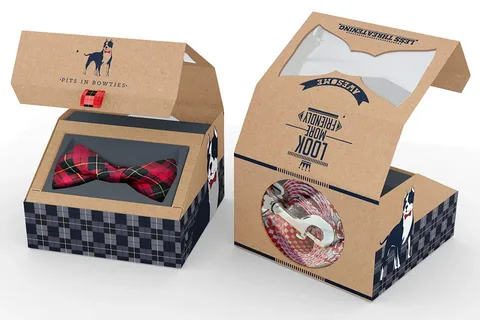Quality control in packaging impacts product quality, customer satisfaction, and brand perception in a notable manner. It can lead to well-designed, durable, defect-free packaging that tailors perfectly to the product inside.
But quality control requires diligence and the implementation of effective techniques and technologies to monitor packaging performance, identify issues, and drive continuous improvement. Read on as we explore the key aspects of mastering quality control in packaging to achieve excellence.
The Basics of Quality Control in Packaging
Table of Contents
Quality control refers to the systematic monitoring and evaluation of various aspects of a product, service, or idea to ensure and maintain a desired level of quality. In packaging, quality control encompasses the inspection, examination, and testing of packaging materials, processes, and final packaged products to ensure they meet the required specifications and standards.
Importance of Quality Control in Packaging
Here are some reasons why quality control is vital for packaging and why you should take it seriously:
- It helps ensure product safety and prevents contaminated or defective packages from reaching customers. This process effectively protects your brand and helps you avoid legal issues.
- It maintains consistency in the packaging, which preserves the brand image and customer experience. Uniform packaging builds trust in the brand and product.
- It reduces waste by minimizing defective packages. This process cuts down costs associated with materials, production, storage, and scrapped products.
- It complies with industry standards and regulations. Proper quality control is necessary to meet materials, testing, safety, and product information guidelines.
- It improves operational efficiency. Robust quality control procedures optimize processes and resources to achieve high quality at lower costs.
Techniques for Quality Control in Packaging
Quality control is essential to ensure packages meet the standards to protect and deliver products safely to customers. Manufacturers can employ several key techniques to monitor packaging quality, including inspection, statistical process control, and root cause analysis.
Inspection
This technique evaluates that packages conform to legal industrial specifications. Turing packaging inspection, it’s paramount to have these factors in mind:
- Visual Inspection: Visual checks that confirm containers are undamaged, properly sealed, labeled correctly, etc. It allows for a quick review of many packages.
- Dimensional Assessment: Physical measurement of key dimensions like height, width, depth, seam thickness, etc., to verify they meet design tolerances. It prevents issues with oversized or undersized packages.
- Functional Testing: Simulated transit testing to evaluate if containers can withstand handling, stacking weight, drops, etc., without damage or leaks. Replicates stresses of the supply chain.
Statistical Process Control (SPC)
SPC uses statistical methods to monitor packaging processes and determine if their manufacturing is within specifications. It allows the detection of subtle changes that could impact quality. Key metrics include mean, range, standard deviation, and control limits.
Root Cause Analysis (RCA)
This technique determines the underlying cause of any quality issues or non-conformances. The cause could come from a material, equipment, environment, processes, or personnel problem. RCA uses techniques like brainstorming, Pareto charts, cause and effect diagrams, and histograms to isolate the primary cause and enable corrective actions.
Technologies for Quality Control in Packaging
As the packaging industry evolves, new technologies enable more stringent quality control and ensure product integrity. Automated inspection systems, digital quality management, and RFID tracking transform how businesses monitor and guarantee packaging quality. Let’s take a look at each of them.
Automated Inspection
Automated inspection has two frequently used variants used to scan for package health. They are:
- Machine Vision: This approach automatically inspects packages using cameras and image processing software. Cameras capture images of printed labels, sealed pouches, sorted materials, etc., and the software analyzes the images to detect any errors, contaminants, or irregularities. It can check for missing or obscured text, incorrectly orientated labels, damaged pouches, foreign debris, and more with a speed and consistency that humans cannot match.
- X-Ray Inspection: This method uses X-rays to scan packaged products and generate 3D images that showcase the internal contents and structure. It is useful for detecting contaminants, ensuring the correct configuration of components, and confirming uniformity of fill levels or ingredient distribution. X-ray inspection provides a non-invasive look inside packaging throughout the entire production process.
Digital Quality Control
Digital quality control refers to the use of software and cloud systems to manage quality across the entire packaging process. It includes quality management systems (QMS), corrective and preventive action tools, compliance monitoring with metrics and alerts, training management systems, and document control with approval workflows.
Digital quality control provides visibility into issues, accountability for resolution, and optimized management of best practices to continuously improve safety and reduce waste while decreasing costs and ensuring regulatory compliance.
Radio-Frequency Identification (RFID)
RFID technology uses radio frequency identification tags to wirelessly transmit data about packaging and its contents. RFID tags on cases, pouches, or labels allow for tracking and tracing throughout the supply chain. They enable recall management, logistics optimization, fraud detection, and authenticating product attributes.
Interactive RFID enhances the user experience by providing additional product details and recommendations through smartphone apps and store sensors. RFID also automates sorting operations with high-speed readers for automated routing and re-direction based on tag information for increased efficiency and reduced errors.
Conclusion
Quality control is truly an art, not just a checklist. By embracing a culture of quality that permeates the entire organization, packaging companies can achieve a level of excellence that delights customers and sets them apart in the market.
Mastering the art of quality control requires diligence, innovation, and a constant dedication to improving processes and reducing errors. When done with passion and precision, quality control translates to products that satisfy deeply, retain customers fiercely, and ultimately build a brand people trust. Excellence in packaging starts and ends with a passion for quality—and a determination to reinvent it each and every day.
To learn more about how you can catapult your quality control processes to the next level, don’t forget to visit https://www.seal-check.pro/quality-control-of-packaging for more information.







